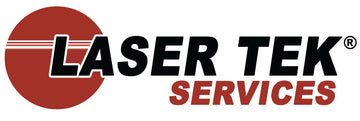As observed by most Industry analysts, dye sublimation printers are far superior against the best inkjet printers in terms of color print quality. While the development of dye sublimation printers has ebbed for some time, inkjets continue to catch the imagination of manufacturers to the point that print quality has breached a similar plateau. The naked eye will not be able to detect the variance in terms of print quality but under the microscope, inkjet printouts are actually more rough and grainy compared to dye sublimation printers. Moreover, dye sublimation printouts are reinforced with a protective over coating which preserves the integrity of dye prints for a longer period of time.
Dye Sublimation Ribbon. Dye sub printers employ CMYO (cyan, magenta, yellow and over coating) colors that eliminates black in favor of an over coating. The dye is stored in a cellophane ribbon that is segmented into 4 panels; one for each color. Panel size is likewise dependent on the media used for printing. During printing, the rollers move media and one of the colored panels under a thermal print head.
The aftermarket for printer consumables has been around since the 90s. Today, it is a fast growing industry. Be updated on the latest happenings with the toner cartridge remanufacturing industry.
Dye Sublimation Printer in Operation. The dye sub printer employs heat to transfer dye into media such as coated paper, plastic cards or fabric. Minute heating elements outfitted into the thermal print head heats-up rapidly, thus laying variable amounts of dye (depending on the heat applied) on paper. This is a process that transforms solid to gas state without first switching to liquid phase. Thereafter, the dye diffuses over paper and solidifies following the gaseous phase. The entire process is repeated 4 times, with each of the ribbon panels and coated media passing through the print head. The final process engages the over coating that protects the prints from UV rays and re-sublimating, once exposed to humid conditions.
Dye Sublimation Printer versus Inkjets. What sets apart dye sublimation printers from inkjets is its employ of Continuous Tone Technology that produces accurate, incessant tones, making its output look like chemical processed photographs. Moreover, fewer parts breakdown with dye sublimation printer units since the thermal head does not move in a sweeping, back and forth motion over paper or media; so that fewer parts actually breakdown. However, recent technical advances pertinent to inkjet technology allowed inkjet printers to deliver exceptional, high quality prints. This is due to the employ of multiple microscopic droplets and excellent quality ink that equals or even exceeds fidelity over that of dye sublimation.
Sub Dye Printers Disadvantages. What is not appealing with sub dye printers is the disposable nature of its ribbon panels. Once a panel has been used, what is left of the dye cannot be reused for printing without producing a blank dot on paper, courtesy of the dye previously used. And due to its single roll printing design, 4 panels of colored dye must be used in a single print job, allowing wasted dye to go down the drain. This is entirely different from the set up of inkjet printers where ink cartridges are only replaced every time it runs out of ink. Other drawbacks include the hefty cost of sub dye ribbons and the limited types of media that can be loaded into the printer.
Reuse empty toner cartridgeand save as much as 80% on printing costs. Visit http://www.lasertekservices.com and shop for the toner refill kit compatible with your cartridge.
Dye sublimation printers may come out superior over inkjets in terms of color print quality, but the drawbacks mentioned would certainly make inkjet printers and ink cartridges a better choice.





